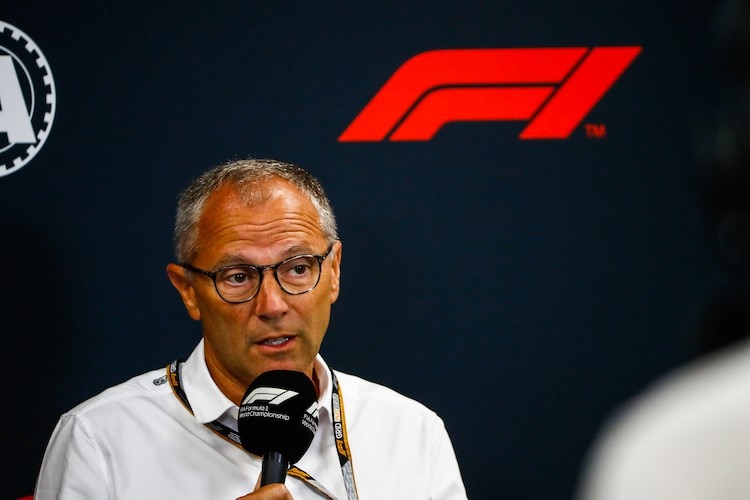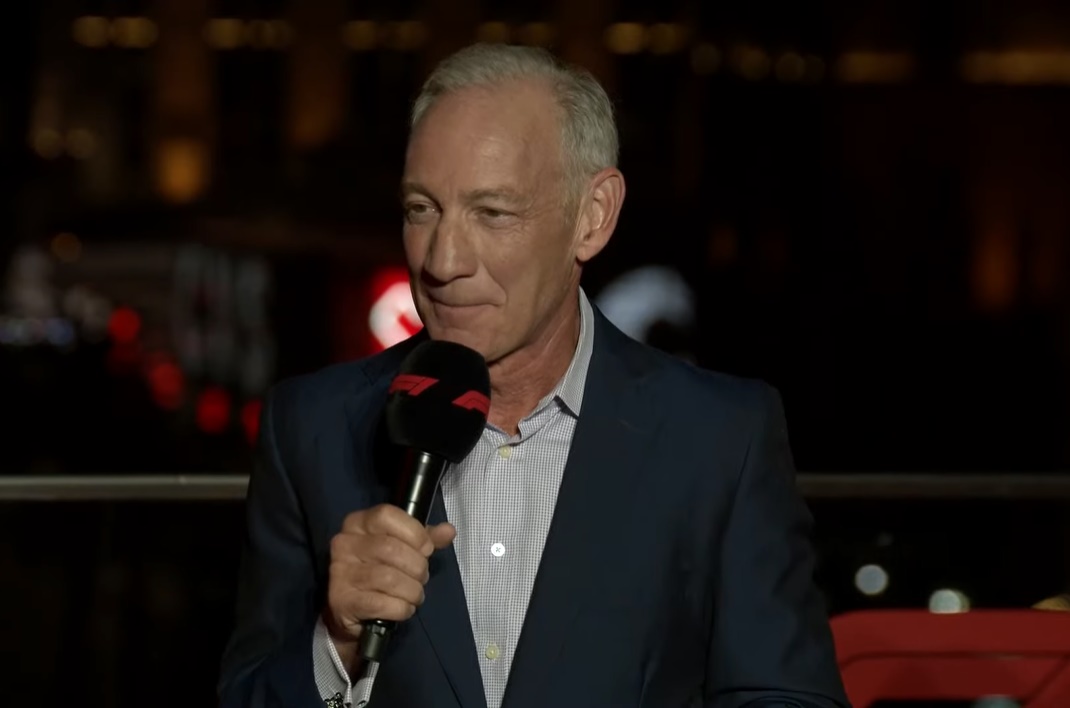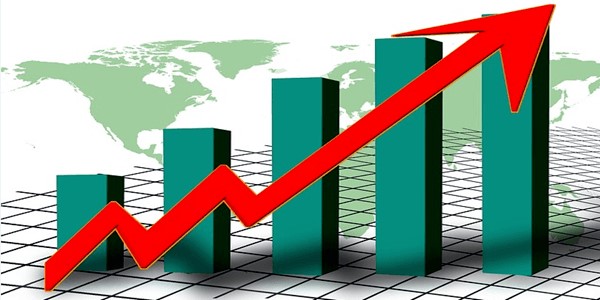F1: Series revenue grows by 20% to $2.5B for 2022
Formula 1 CEO Stefano Domenicali says the series in its strongest position after revealing it generated over $2.5bn in revenue last year.
The series’ owner Liberty Media presented its latest set of financial results on Wednesday, with revenue from F1 coming to $754 million over the final quarter of 2022.
F1’s revenues rose year-on-year by 20%, despite holding the same number of races (22) last year as it did the previous season.

The series paid out $1.16bn to its 10 competing teams in 2022 (compared with $1.068bn the previous year) and that will grow higher in 2023. The financial health of its competitors is better than it has been for years, and several newcomers have expressed interest in joining the championship. The FIA began a formal process for new entrants to apply last month.
F1 noted that its key measure of primary revenue rose 14% from $1.850bn to $2.107bn, split between race promotion fees (28.6%), media rights (36.4%) and sponsorship (16.9%).
“Media rights revenue increased for the full year due to growth in F1 TV subscription revenue and increased fees under new and renewed contractual agreements, and sponsorship revenue increased due to the recognition of revenue from new sponsors.”
“I think F1 is in the strongest position it has ever been,” Domenicali told a call for investors after the results were announced.
He said “growing fan engagement” in the sport had been driven by increased action in races due to the new technical regulations which he said had allowed cars to race together more closely.
The 2022 season “saw record attendance at grand prix events,” according to Domenicali. “We welcomed more than 5.7 million fans to race weekends, up 36% compared to 2019. Demand is continuing into 2023, with sell-out crowds expected at a number of races this season.”
The increased interest in F1 was reflected in growing viewership online and through television, said Domenicali.
Playing the Long Game
On the earnings call, Liberty Media CEO Greg Maffei says Formula 1 is playing a “long game” in growing the overall size of the business while helping the teams to make money.

“One of the things that we at F1 with Liberty’s help have been trying to do is build a mentality that I’ll credit the NFL for, which is one league, that we benefit when everybody benefits,” said Maffei in a call with Wall Street analysts.
“And yes, the teams compete very hard on Sunday, but on Monday, we need to think about growing the entire ecosystem. It was critical that we have healthy teams, so that we could have a healthy league.
“It was critical that they had a prospect of making money, even the teams towards the back of the grid, so that we could have a prospect of also making money.
“They’ve seen radical increases in their value, we’ve seen pretty good increases in our value.
“But we’re here to play the long game. And it doesn’t mean we won’t have disagreements with the teams about how much of the pie is ours, and how much the pie is theirs.
“But trying to build the mentality that as you gain, we gain, and vice versa, and that we’re playing the long game here is really part of our goal.”
“I think we will have a strengthened hand and in the next Concorde Agreement,” he said. “Not a whip hand, but a hand saying, ‘Hey, look, we’re here to grow the value, and you’re going to benefit from it.’ And we want to see your team value grow dramatically.”
FORMULA ONE GROUP – The following table provides the financial results attributed to the Formula One Group for the fourth quarter and full year 2022. Approximately $17 million and $56 million of corporate level selling, general and administrative expense (including stock-based compensation expense) was allocated to the Formula One Group in the fourth quarter and full year 2022, respectively.
“Formula 1 saw record attendance at its races in 2022 and we were once again the fastest growing major sport on social media. We are continuing to build fan engagement through our high-quality broadcast, enhanced content on F1 TV, social channels and new immersive experiences including the F1 Arcade and F1 Exhibition products. F1’s global relevance and sustainability efforts are enticing the entry of premier OEMs including Audi and Ford in 2026, and we are confident they will bring significant value to our sport,” said Stefano Domenicali, Formula 1 President and CEO. “We look forward to a record 23 race calendar this year including, in particular, the inaugural Las Vegas Grand Prix.”
|
|
|
|
|
|
|
|
|
|
|
|
|
|
|
||||
|
|
|
Three months ended |
|
|
Twelve months ended |
||||||||||||
|
|
|
December 31, |
|
|
December 31, |
||||||||||||
|
|
|
2021 |
|
2022 |
|
|
2021 |
|
2022 |
||||||||
|
|
|
amounts in millions |
|
|
amounts in millions |
||||||||||||
|
Formula One Group |
|
|
|
|
|
|
|
|
|
|
|
|
|
||||
|
Revenue |
|
|
|
|
|
|
|
|
|
|
|
|
|
||||
|
Formula 1 |
|
$ |
787 |
|
|
$ |
754 |
|
|
|
$ |
2,136 |
|
|
$ |
2,573 |
|
|
Total Formula One Group |
|
$ |
787 |
|
|
$ |
754 |
|
|
|
$ |
2,136 |
|
|
$ |
2,573 |
|
|
Operating Income (Loss) |
|
|
|
|
|
|
|
|
|
|
|
|
|
||||
|
Formula 1 |
|
$ |
81 |
|
|
$ |
58 |
|
|
|
$ |
92 |
|
|
$ |
239 |
|
|
Corporate and other |
|
|
(19 |
) |
|
|
(17 |
) |
|
|
|
(52 |
) |
|
|
(66 |
) |
|
Total Formula One Group |
|
$ |
62 |
|
|
$ |
41 |
|
|
|
$ |
40 |
|
|
$ |
173 |
|
|
Adjusted OIBDA |
|
|
|
|
|
|
|
|
|
|
|
|
|
||||
|
Formula 1 |
|
$ |
183 |
|
|
$ |
147 |
|
|
|
$ |
495 |
|
|
$ |
593 |
|
|
Corporate and other |
|
|
(15 |
) |
|
|
(12 |
) |
|
|
|
(29 |
) |
|
|
(42 |
) |
|
Total Formula One Group |
|
$ |
168 |
|
|
$ |
135 |
|
|
|
$ |
466 |
|
|
$ |
551 |
|
The following table provides the operating results of Formula 1 (“F1”).
F1 Operating Results
|
|
Three months ended |
|
|
|
|
Twelve months ended |
|
|
|
|||||||||||||||
|
|
December 31, |
|
|
|
|
December 31, |
|
|
|
|||||||||||||||
|
|
2021 |
|
2022 |
|
% Change |
|
2021 |
|
2022 |
|
% Change |
|||||||||||||
|
|
(unaudited) |
|
|
|
(unaudited) |
|
|
|||||||||||||||||
|
|
amounts in USD millions |
|
|
|
amounts in USD millions |
|
|
|||||||||||||||||
|
Primary Formula 1 revenue |
$ |
615 |
|
|
$ |
568 |
|
|
(8 |
) |
% |
|
$ |
1,850 |
|
|
$ |
2,107 |
|
|
14 |
|
% |
|
|
Other Formula 1 revenue |
|
172 |
|
|
|
186 |
|
|
8 |
|
% |
|
|
286 |
|
|
|
466 |
|
|
63 |
|
% |
|
|
Total Formula 1 revenue |
$ |
787 |
|
|
$ |
754 |
|
|
(4 |
) |
% |
|
$ |
2,136 |
|
|
$ |
2,573 |
|
|
20 |
|
% |
|
|
Operating expenses (excluding stock-based compensation included below): |
|
|
|
|
|
|
|
|
|
|
|
|
|
|
|
|
|
|||||||
|
Team payments |
|
(378 |
) |
|
|
(319 |
) |
|
16 |
|
% |
|
|
(1,068 |
) |
|
|
(1,157 |
) |
|
(8 |
) |
% |
|
|
Other cost of Formula 1 revenue |
|
(180 |
) |
|
|
(208 |
) |
|
(16 |
) |
% |
|
|
(421 |
) |
|
|
(593 |
) |
|
(41 |
) |
% |
|
|
Cost of Formula 1 revenue |
$ |
(558 |
) |
|
$ |
(527 |
) |
|
6 |
|
% |
|
$ |
(1,489 |
) |
|
$ |
(1,750 |
) |
|
(18 |
) |
% |
|
|
Selling, general and administrative expenses |
|
(46 |
) |
|
|
(80 |
) |
|
(74 |
) |
% |
|
|
(152 |
) |
|
|
(230 |
) |
|
(51 |
) |
% |
|
|
Adjusted OIBDA |
$ |
183 |
|
|
$ |
147 |
|
|
(20 |
) |
% |
|
$ |
495 |
|
|
$ |
593 |
|
|
20 |
|
% |
|
|
Stock-based compensation |
|
(5 |
) |
|
|
(1 |
) |
|
80 |
|
% |
|
|
(17 |
) |
|
|
(3 |
) |
|
82 |
|
% |
|
|
Depreciation and Amortization(a) |
|
(97 |
) |
|
|
(88 |
) |
|
9 |
|
% |
|
|
(386 |
) |
|
|
(351 |
) |
|
9 |
|
% |
|
|
Operating income (loss) |
$ |
81 |
|
|
$ |
58 |
|
|
(28 |
) |
% |
|
$ |
92 |
|
|
$ |
239 |
|
|
160 |
|
% |
|
|
|
|
|
|
|
|
|
|
|
|
|
|
|
|
|
|
|
|
|||||||
|
Number of races in period |
|
7 |
|
|
|
6 |
|
|
|
|
|
|
22 |
|
|
|
22 |
|
|
|
|
|||
| a) | Includes amortization related to purchase accounting of $90 million and $81 million for the fourth quarters 2021 and 2022, respectively, and $359 million and $325 million for the full years 2021 and 2022, respectively, which is excluded from calculations for purposes of team payments. |
Primary F1 revenue represents the majority of F1’s revenue and is derived from (i) race promotion revenue, (ii) media rights fees and (iii) sponsorship fees. For the year ended December 31, 2022, these revenue streams comprised 28.6%, 36.4% and 16.9%, respectively, of total F1 revenue.
There were 22 and 6 races held in the full year and fourth quarter of 2022, respectively, compared to 22 and 7 races held in the full year and fourth quarter of 2021. The 2021 season was impacted by the pandemic, with attendance at races limited particularly in the first half of the season. Restrictions on fan attendance reduced as 2021 progressed, with all races in the second half of the year operating at either full capacity or with limited restrictions. F1’s results in 2022 were not impacted by capacity limitations, and F1 had record growth in attendance in the grandstands and in the Paddock Club, with numbers well above pre-COVID-19 levels.
Primary F1 revenue grew for the full year with increases across all primary revenue streams. Race promotion revenue grew due to higher fees generated from the mix of events held, with three additional races held outside of Europe compared to 2021 and the return of capacity crowds, whereas limitations on fan attendance in 2021 led to one-time changes in the contractual terms of a limited number of races held. Media rights revenue increased for the full year due to growth in F1 TV subscription revenue and increased fees under new and renewed contractual agreements, and sponsorship revenue increased due to the recognition of revenue from new sponsors.
Primary F1 revenue decreased in the fourth quarter, driven by lower race promotion and media rights revenue primarily due to the impact of one less race held in the fourth quarter of 2022 compared to the prior year period. Race promotion revenue declined due to one less race held, as well as lower fees generated from the different mix of events on the calendar with only three of the same races occurring in both periods. Media rights revenue decreased as contractual increases and growth in F1 TV subscription revenue were offset by the impact of lower proportionate recognition of season-based income (6/22 races took place in the fourth quarter of 2022 compared to 7/22 in the fourth quarter of 2021). Sponsorship revenue increased as the recognition of revenue from new sponsors more than offset the impact of lower proportionate recognition of season-based income.
Other F1 revenue increased in the full year and fourth quarter driven by higher hospitality revenue generated from the Paddock Club, which operated at 19 races with record attendance throughout 2022 compared to 11 events during 2021, as well as higher freight revenue with more races held outside of Europe compared to the prior year and the impact of freight cost inflation on billing rates. Other F1 revenue for the full year also benefited from the ability to undertake a greater scope of activities than was possible in the pandemic-affected first half of 2021.
Operating income and adjusted OIBDA(2) grew for the full year. Team payments increased for the full year driven by the growth in F1 revenue and the associated impact on the calculation of the team payments, which are 100% variable under the 2021 Concorde Agreement. Other cost of F1 revenue is largely variable in nature and is mostly derived from servicing both Primary and Other F1 revenue opportunities. These costs increased in the full year primarily driven by higher freight costs with three more events held outside of Europe and underlying inflation on freight costs, increased Paddock Club costs associated with higher hospitality attendance and servicing eight additional Paddock Club events compared to the prior year, as well as higher commissions and partner servicing costs associated with increased Primary F1 revenue streams and higher Formula 2 and Formula 3 related costs. Selling, general and administrative expense increased in the full year due to higher personnel and IT costs and increased legal and other advisory fees, as well as approximately $19 million of costs associated with the planning and launch of the Las Vegas Grand Prix.
Operating income and adjusted OIBDA decreased in the fourth quarter. Team payments decreased due to the impact of the pro rata recognition of such payments across the race season as one less race was held in the fourth quarter of 2022 compared to the prior year period. This was offset by increased Other cost of F1 revenue due to higher freight costs and costs associated with higher hospitality attendance in the Paddock Club. Selling, general and administrative expense increased in the fourth quarter primarily due to costs associated with the planning and launch of the Las Vegas Grand Prix.
